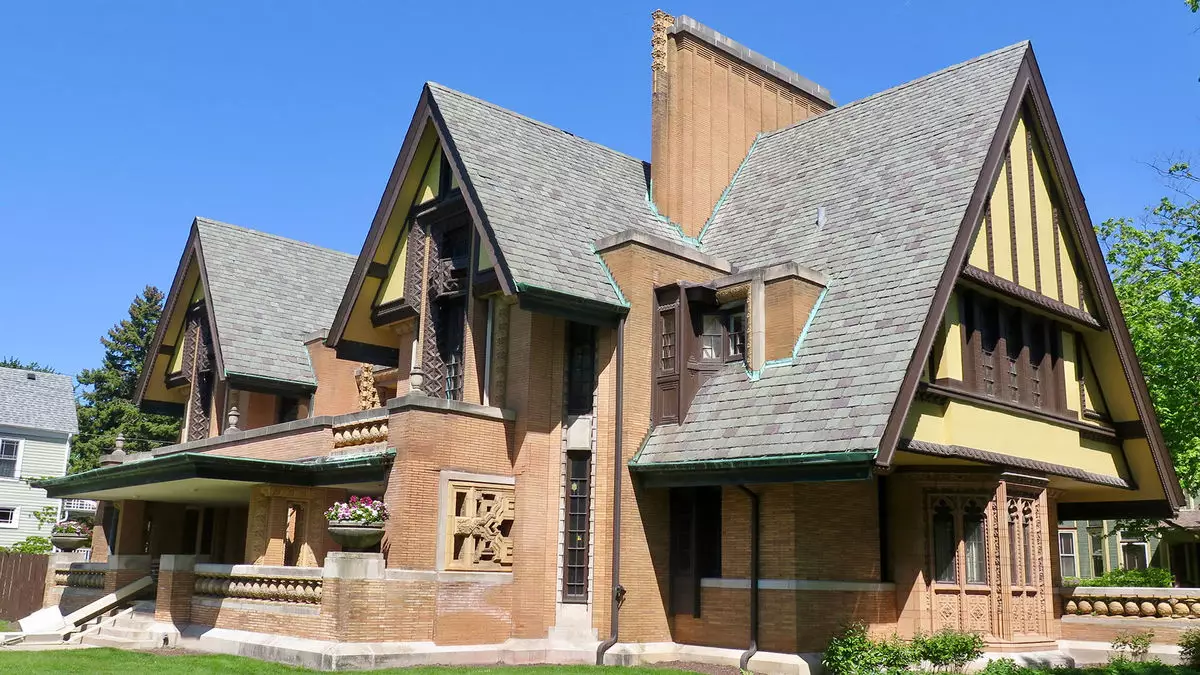Growing up in the heart of Illinois, my childhood excursions to both Oak Park and Hyde Park left a lasting impression, though I never fully immersed myself in the architectural wonders of Frank Lloyd Wright until I embarked on a cruise highlighting these masterpieces. It wasn’t until I boarded the Victory I that I genuinely appreciated the genius of Wright’s design philosophy woven intricately into the fabric of Chicago’s landscape. The experience organized by Victory Cruise Lines—a profound excursion tailored for those eager to explore Wright’s architecture—opened my eyes to this unparalleled architect’s lifework and the cultural significance of his creations.
Victory Cruise Lines has entered into a pivotal partnership with the Frank Lloyd Wright Foundation, which enhances the Great Lakes travel program. Through this collaboration, passengers are introduced to enriching programs aboard both the Victory I and Victory II, alongside architectural explorations in iconic cities like Detroit and Grand Rapids, Michigan. Witnessing the meticulous attention to detail in the shore excursions was particularly noteworthy. Each stop offered a curated experience that felt exclusive yet accessible, revealing the depth of Wright’s impact in a manner that the average tourist would struggle to replicate alone.
Cultural Significance and Organization of Tours
Kari Tarnowski, the vice president of marketing for Victory Cruise Lines, articulated the essence of these excursions, emphasizing their role as a key feature of the travel experience. The collaborations with esteemed institutions like the Frank Lloyd Wright Foundation, the National Museum of the Great Lakes, and the Henry Ford Museum illustrate Victory’s commitment to delivering more than superficial tours. These partnerships facilitate a multidimensional understanding of American history and architecture, akin to visiting UNESCO World Heritage Sites in Europe. It’s refreshing to have such cultural treasures so close to home, enabling travelers to absorb the richness of Wright’s contributions without the complications of international travel.
Tourists often overlook the incredible architectural narratives available in their own backyard. The 2019 UNESCO designation of Wright’s 20th-century architecture—as part of a select group of just 26 listings in the U.S.—is a testament to his innovative brilliance. This inclusion not only elevates the status of cities like Chicago but also highlights the importance of educating the public about these architectural landmarks. Key buildings, such as Unity Temple in Oak Park and the Frederick C. Robie House in Hyde Park, are revived in conversations about elegance and modernity, serving not only as tourist landmarks but as educational platforms.
Exploring Architectural Marvels
During my time on Victory’s Chicago tour, I gained deeper insights into Frank Lloyd Wright’s evolution as an architect. The exploration of his Oak Park home was a revelation. Here was a young Wright, just 22 years old, already laying the groundwork for what would become a formidable legacy. From its completion in 1889, this house did not merely house a family; it served as a canvas for Wright’s relentless pursuit of innovation. As we meandered through various rooms, the knowledgeable interpreters provided a rich context to his work. They elaborated on the inspirations drawn from the aftermath of the Great Chicago Fire and the broader architectural movements of the time.
As we stepped outside into the slightly warmer embrace of an Oak Park morning, several sublime structures, all manifestations of Wright’s vision, surrounded us. The iconic Unity Temple, with its unadorned concrete exterior, starkly diverges from traditional ecclesiastical design, creating an instantly recognizable silhouette. Inside, the space transforms, welcoming visitors with warmth and intimacy—a prescient expression of spiritual and communal life. It is a bold statement against material excess, achieving grandeur through simplicity.
Moving on to the Hyde Park masterpiece—the Robie House—was like stepping into an artist’s dream. Designed in 1910, this house represents the zenith of Wright’s Prairie Style, characterized by horizontal lines and a strong integration with the landscape. The contemporary relevance of the Robie House cannot be overstated; its innovative use of space and light prefigures many elements now commonplace in modern architectural design. Standing in front of the 175 windows, which seem to dissolve the boundaries between indoors and outdoors, I truly appreciated Wright’s holistic approach to living environments.
A Seamless Experience
The excitement of this meticulously planned shoreline experience stemmed not just from architectural exploration but also from logistical excellence. The excursion spanned 8.5 hours and cost $169, inclusive of lunch, promising a seamless transition from a pre-cruise hotel to the luxurious amenities of the ship docked at Navy Pier. Such arrangements reflect a growing travel trend towards curated experiences, a demand that has skyrocketed post-pandemic as explorers seek value and depth over mere leisure. The comforts afforded to travelers wishing to book such tours, especially given the strong demand, ensure access to exceptional opportunities that would otherwise remain elusive.
As I ventured back to the ship, I couldn’t help but reflect on the power of architecture as a narrative tool—a conduit through which we can connect with our history, culture, and themselves. Frank Lloyd Wright’s works, once the focal point of my explorations, now serve as a catalyst for deeper discussions about artistry, innovation, and human experience in the ever-evolving urban environment.


Leave a Reply